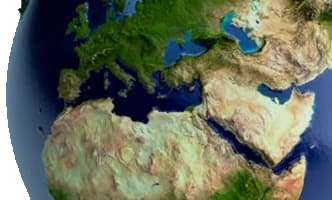The International Court of Justice (ICJ) handed down on the 21st of April 2010 a very important judgment in the Case Concerning Pulp Mills on the River Uruguay (Argentina v. Uruguay)[1]. The importance of the judgment lies on the fact that the ICJ dealt with the Environmental Impact Assessment (EIA) connected to an activity that is liable to cause harm to a shared resource as well as transboundary harm [2], granting to it a new status.
In the same judgment, the ICJ did not uphold the claims of Argentina against Uruguay that it had breached four different substantive obligations in relation to the environmental well-being of the river. These were the contribution to the optimum and the rational utilisation of the river; the management of the soil and the woodland in a way not to impair the quality of the waters; the co-ordination of measures to avoid changes in the ecological balance; and the prevention of pollution and the preservation of the aquatic environment.
Concerning the EIA, according to the 1975 Statute of the River Uruguay[3], a treaty signed by Argentina and Uruguay at Salto (Uruguay) on 26 February 1975 and having entered into force on 18 September 1976 (hereinafter the “1975 Statute”), the parties agreed on the necessity of conducting an EIA prior to authorizing any enterprise to construct a plant, such as a pulp mill that might jeopardize the environment of the River Uruguay. Argentina accused Uruguay that it failed to produce an EIA prior to the authorization of the construction of the pulp mill; and also accused Uruguay that the EIA was conducted unsatisfactorily according to the rules of International Law. This EIA did not take into account “all potential impacts from the mill”. Such rules are included in the 1991 Espoo Convention on Environmental Impact Assessment in a Transboundary Context of the United Nations Economic Commission for Europe[4] (hereinafter the “Espoo Convention”), and the 1987 Goals and Principles of Environmental Impact Assessment of the United Nations Environment Programme[5] (hereinafter, the “UNEP Goals and Principles”) adopted by UNEP Governing Council[6]. Uruguay accepted that – according to the international practice – an EIA was necessary; however, at the same time, it rejected the argument that International Law “impose(s) any conditions upon the content of such an assessment”, especially in the cases where such a project is not common to several states.
The ICJ stated[7] that the parties should carry out an EIA in order to comply with their obligations to protect the aquatic environment according the 1975 Statute. In cases where there is a risk that an industrial activity may have significant adverse impact in a transboundary context, and in particular on a shared resource, the ICJ took a step forward by considering an EIA “a requirement under general international law”[8]. This constitutes a practice that has gained much acceptance from the states in recent years. The ICJ could find references to the scope and content of an EIA either in general International Law or in the 1975 Statute[9].
It has to be noted that the EIA has been given the status of “environmental standard” by several environmental regimes, such as the 1976 Barcelona Convention for the Protection of the Mediterranean Sea Against Pollution[10], after the 1995 amendments[11]. On the other hand, the EIA has been given explicitly the status of duty of states only by certain environmental regimes and only within these regimes, such as the Espoo Convention[12]. The Trail Smelter Case (1938)[13]and the “Principle 17” on the EIA of the 1992 Rio Declaration on Environment and Development[14] have not been granted the EIA with the status of international duty.
At the same time, the ICJ, although it seemed to have taken into account “that consultation by Uruguay of the affected populations – on both the Argentinean and the Uruguayan sides – did indeed take place”[15], took the view that there is no legal obligation to consult the affected populations[16]. No doubt, this is a rather questionable approach, given that “public consultation” constitutes a very important element of modern international environmental regimes, such as the 1998 Aarhus Convention on Access to Information, Public Participation in Decision-Making and Access to Justice in Environmental Matters [17]or the Espoo Convention[18]. Similar developments have taken place in the context of the European Union as is evidenced by a series of Directives, e.g. the Directive 2001/42/EC of the European Parliament and of the Council of 27 June 2001 on the Assessment of the Effects of Certain Plans and Programmes on the Environment[19], the Directive 2003/35/EC of the European Parliament and of the Council of 26 May 2003 Providing for Public Participation in Respect of the Drawing Up of Certain Plans and Programmes Relating to the Environment and Amending with Regard to Public Participation and Access to Justice Council Directives 85/337/EEC and 96/61/EC [20]and the Directive 2003/4/EC of the European Parliament and of the Council of 28 January 2003 on Public Access to Environmental Information and Repealing Council Directive 90/313/EEC[21].
Concerning the legal framework of the case, the ICJ pointed out that “neither the 1975 Statute nor general international law specify the scope and content of an environmental impact assessment” and that Argentina and Uruguay are not parties to the Espoo Convention[22]. On the other hand, the ICJ noted that the UNEP Goals and Principles are not a binding instrument for either of the two states. As guidelines from a technical body within the UN system, they have to be taken into account by each state when adopting internal regulatory measures. The ICJ avoided giving any kind of content to the EIA. In its view “it is for each State to determine in its domestic legislation or in the authorization process for the project, the specific content of the environmental impact assessment required in each case, having regard to the nature and magnitude of the proposed development and its likely adverse impact on the environment as well as to the need to exercise due diligence in conducting such an assessment.” The ICJ also considered that prior to any environmental project, an EIA must be conducted. This EIA has to monitor the effects of any project on the environment.
Interestingly enough, the ICJ finally ruled on the parties’ use of experts. According to the Statute of the Court[23], experts who are called as witnesses before the ICJ, they are examined by the parties and the ICJ[24]. Nevertheless, in most cases experts were presented before the ICJ as counsels or advocates, and as a result they could not be subject to questioning by the other party and the ICJ. Instead, the ICJ considered that it would have been more useful had they been presented as expert witnesses [25].
Endnotes
- Available at http://www.icj-cij.org/docket/files/135/15877.pdf (last visited July 20, 2010) (hereinafter, “Judgment”).
- Judgment, supra n. 1, para. 203 and so on.
- UNTS, vol. 1295, No. I-21425, p. 340.
- UNTS, vol. 1989, p. 309.
- UNEP/WG.152/4 Annex (1987).
- 14th Sess, Dec. 14/25 (1987).
- Judgment, supra n. 1, para. 204.
- Ibid., para. 204.
- Ibid., para. 205.
- 15 ILM (1976), p. 290.
- Art. 4(3)(c).
- Art. 2(2).
- III UNRIAA, p. 1905.
- 31 ILM (1992), p. 874.
- Judgment, supra n. 1, para. 219.
- Ibid., para. 216.
- Arts. 6 – 8, 38 ILM (1999), p. 517.
- Art. 5.
- OJ L 197 (21/7/2001), p. 30.
- OJ L 156 (25/6/2003), p. 17.
- OJ L 41 (14/2/2003), p. 26.
- Judgment, supra n. 1, para. 205.
- Art. 51 ; and Rules of Court arts. 57 and 64.
- Judgment, supra n. 1, para. 165 – 168.
- Ibid., para. 167.
About the author

Nikolaos Tsokanas
Lawyer, Postdoctoral Researcher, MEPIELAN Centre/Panteion University of Athens, Greece

